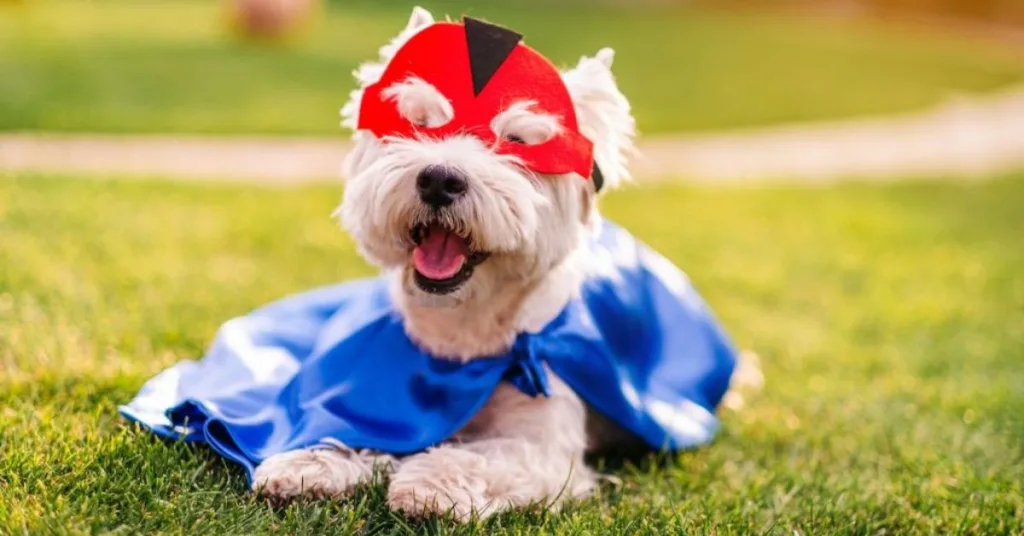New
Pet Fashion Trends: From Functional Gear to Stylish Outfits
The Evolution of Functional Pet Gear into Fashion Statements
Pet clothing did not emerge overnight as a purely decorative idea. Its earliest forms were purely functional—garments designed to shield animals from the cold, rain, or environmental hazards. In rural communities, working dogs often wore leather coverings or wool blankets during winter, and horses had ornate yet practical capes for protection. As societies shifted toward urban living, the utilitarian purpose of animal clothing gradually merged with lifestyle aesthetics. In major cities, pet owners began dressing dogs in coats not only for warmth but also as a reflection of their own identity and taste. This shift marked the beginning of a cultural transformation: clothing for pets was no longer restricted to survival but became an extension of fashion and family values.
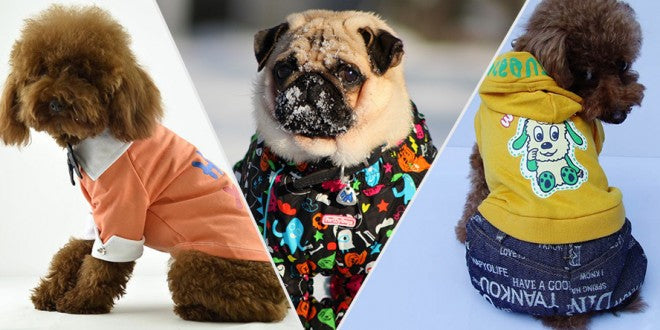
The transition accelerated in the late twentieth century, when consumer culture and increasing disposable income gave rise to an industry catering to companion animals. What once was limited to practical coats expanded into a diverse marketplace of sweaters, rain jackets, and protective footwear. At the same time, decorative accessories—bows, scarves, bandanas—entered the mainstream. Clothing was no longer simply protective gear; it evolved into a language of personal expression. Pet guardians could project their own style choices onto their animals, reinforcing the bond while also signaling identity to the world. This trend reflects a broader phenomenon in which pets are viewed less as property and more as integral members of the household.
Media influence amplified these changes. When celebrities appeared with pets dressed in miniature designer clothing, audiences around the world took notice. Dogs and cats became visual extensions of luxury, humor, or individuality. Social media later amplified this trend further: Instagram and TikTok are filled with accounts dedicated to stylishly dressed pets, inspiring millions of owners to experiment with fashion for their own companions. Functional gear remains important, but its design now incorporates sleek cuts, vibrant patterns, and materials that blur the line between utility and style.
In contemporary culture, functional gear like harnesses, collars, and protective boots often double as aesthetic pieces. Reflective jackets keep pets safe during nighttime walks while also serving as chic streetwear. Waterproof coats protect against harsh weather but come in seasonal collections that mirror human fashion cycles. This merging of utility and beauty demonstrates how far the industry has evolved, responding not only to physical needs but also to the emotional and cultural desires of modern pet owners.
Social and Cultural Forces Driving Stylish Pet Outfits
Fashion is never created in isolation; it reflects broader cultural patterns and social values. The rise of pet fashion mirrors changes in how humans perceive and interact with their animals. As societies increasingly view pets as family members, clothing has become a natural extension of caregiving. Outfits symbolize inclusion, affection, and protection—much like dressing a child for seasonal changes or special occasions. This cultural shift is particularly visible in urban environments, where small companion animals often substitute for larger families. For many, dressing pets provides not only practical benefits but also a sense of joy and belonging.
One major influence is the global spread of social media. Platforms encourage owners to showcase their pets in unique outfits, turning casual dressing into viral phenomena. Trends travel rapidly across borders: a dog wearing a Halloween costume in the United States can inspire similar outfits for pets in Europe, Asia, or Latin America within days. This interconnected culture has created a constant demand for new designs, pushing the industry to innovate with colors, textures, and seasonal releases. As a result, pet fashion now resembles human fashion in its cyclical nature, with spring, summer, autumn, and winter collections tailored for four-legged consumers.
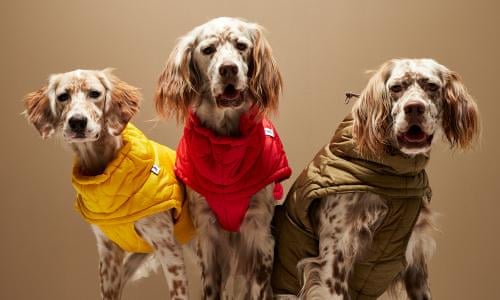
Cultural traditions also play a role. In East Asian countries, festivals such as Lunar New Year often involve pets wearing red garments symbolizing prosperity. In Western societies, Christmas sweaters for pets have become a staple, reflecting broader holiday rituals. In tropical countries, lightweight breathable fabrics dominate, while colder climates emphasize insulated jackets and boots. These regional adaptations reveal how cultural heritage, climate, and tradition intersect in shaping fashion choices.
Generational differences further influence trends. Younger pet owners, particularly millennials and Gen Z, are more likely to treat pets as lifestyle companions. They actively seek products that align with personal values such as sustainability, ethical production, and inclusivity. Many prefer eco-friendly fabrics, artisanal designs, or customizable outfits that reflect their unique identity. In contrast, older generations may prioritize practicality, focusing on weather protection and comfort over aesthetics. These generational distinctions create a diverse market landscape that encourages both mainstream brands and niche designers to experiment with offerings.
Economic factors also contribute. The booming pet industry reflects increasing disposable income and shifting consumer priorities. In many households, pets receive premium care and luxury products even before owners indulge themselves. Pet fashion is no longer confined to high-income demographics; affordable options in mass-market retail stores make stylish clothing accessible to a broader audience. At the same time, luxury brands continue to expand into the pet sector, releasing exclusive pieces that appeal to status-conscious consumers. This dual dynamic ensures that fashion for pets thrives across socioeconomic levels, reinforcing its position as both a cultural necessity and a commercial powerhouse.
Future Directions: Innovation, Sustainability, and Inclusive Design
As the industry continues to grow, new directions emerge that will shape the future of pet fashion. One of the most significant trends is sustainability. With increasing awareness of climate change and ecological responsibility, designers are turning to recycled fabrics, biodegradable materials, and low-impact dyes. Owners who prioritize environmental consciousness seek garments that reflect their values, and brands are responding with collections that combine style with sustainability. Hemp, bamboo fiber, and organic cotton are becoming common choices, offering durability while reducing ecological footprints.
Technology is another frontier. Advances in wearable devices allow integration of sensors into garments that track vital signs, monitor activity, or even regulate body temperature. Smart fabrics can adapt to environmental conditions, offering warmth in winter and breathability in summer. These innovations blur the boundary between fashion and health care, making clothing not only stylish but also medically supportive. Imagine a jacket that alerts owners if their dog’s heart rate spikes or a cooling vest that activates automatically during heatwaves. Such possibilities are no longer futuristic fantasies but developing realities in specialized laboratories and design studios.

Inclusivity represents another critical dimension. Traditional pet clothing often caters to small breeds or toy-sized animals, leaving larger dogs and cats with fewer stylish options. The future points toward more inclusive sizing, adaptable designs, and customizable features that suit diverse body types. Breeds with unique proportions—such as dachshunds, greyhounds, or bulldogs—require specialized fits, and companies are increasingly recognizing this demand. Custom tailoring through 3D scanning and digital measurements may soon become commonplace, ensuring every pet enjoys clothing that fits comfortably and looks appealing.
Cultural fusion will also drive innovation. Globalization allows designers to draw inspiration from diverse traditions, blending motifs, patterns, and textiles from around the world. Outfits inspired by indigenous weaving, regional embroidery, or cross-cultural symbolism create garments that are not only fashionable but also meaningful. This trend fosters appreciation for diversity while offering pet owners a chance to connect with heritage or global artistry through their animals.
The rise of community-driven fashion is another exciting development. Online platforms enable small designers and local artisans to reach international audiences, bypassing traditional retail limitations. Crowdfunding campaigns for creative pet clothing lines illustrate how strongly communities support innovation. This democratization of fashion means the industry is no longer dominated solely by large corporations; independent creators can thrive, offering unique, handmade, and personalized products.
Looking ahead, pet fashion is poised to integrate deeper into human lifestyles. Clothing will reflect not just protection or style but holistic wellness, emotional bonding, and shared identity. Seasonal outfits, festival costumes, and functional gear will continue to evolve, influenced by technology, sustainability, inclusivity, and cultural creativity. As these forces converge, the industry promises a future where pets are not merely dressed but celebrated as partners in expression, care, and joy.
Psychological Dimensions of Dressing Pets
Clothing for animals serves not only practical or aesthetic purposes but also carries psychological meaning for both pets and their human companions. For guardians, choosing garments for dogs or cats often functions as an emotional outlet, a way of expressing affection and strengthening the perception of animals as integral family members. The act of dressing a pet can provide comfort, joy, and a sense of nurturing responsibility, similar to caring for a child. For the animals themselves, properly fitted clothing may generate feelings of security, comparable to swaddling or gentle compression therapy. Anxiety-prone dogs often find reassurance in garments that provide light pressure, reducing stress during thunderstorms, fireworks, or separation periods. Thus, fashion becomes not merely decorative but part of a behavioral toolkit supporting wellness and harmony in human-animal households.
The Role of Media and Celebrity Influence
Media exposure has profoundly shaped modern pet fashion. The rise of televised programs, magazine spreads, and online influencers has elevated animal style into mainstream culture. When celebrities parade their pets in miniature designer coats or sparkling accessories, millions of fans quickly adopt similar practices. Social platforms accelerate this trend, creating viral moments that redefine what is fashionable for animals. A single photo of a star’s dog in a chic raincoat can inspire product launches, seasonal lines, and even global movements in consumer behavior. Beyond glamour, media representation normalizes the act of dressing pets, transforming it from a niche activity into a widespread cultural phenomenon. This influence demonstrates how popular culture reshapes expectations of companionship, blending entertainment with commercial demand.
Intersection of Human and Pet Fashion Cycles
Human fashion cycles strongly influence animal apparel. Designers frequently mirror seasonal colors, fabrics, and cuts found on runways, creating coordinated looks for guardians and their companions. Matching outfits—such as winter coats in identical patterns for owner and dog—emphasize unity while expanding markets for fashion houses. At the same time, pet clothing develops its own distinct cycles. Unlike human garments, pet apparel must account for seasonal shedding, breed-specific proportions, and practical considerations like outdoor activity. This unique overlap generates an entire subindustry dedicated to synchronizing human trends with animal needs, creating opportunities for creativity and cross-market marketing strategies. The alignment between the two worlds highlights the growing fusion of lifestyle industries and the redefinition of family-oriented style.
Economic Significance of the Pet Apparel Market
The pet fashion industry has grown into a multi-billion-dollar global sector, reflecting broader changes in consumer priorities. Increased urbanization, delayed parenthood, and rising disposable income have all fueled spending on animals, transforming them into focal points of household budgets. Retail giants now dedicate entire sections to pet clothing, while boutique designers cater to niche audiences seeking exclusivity. The economic ripple effect extends beyond garments themselves, influencing supply chains in textiles, logistics, advertising, and even event management. Pet fashion shows attract sponsors and media coverage, further legitimizing the industry as a serious commercial enterprise. The market’s resilience during economic downturns illustrates its emotional importance: even in uncertain times, owners continue to prioritize the comfort and appearance of their beloved animals.
Ethical Questions and Consumer Responsibility
Alongside growth come ethical questions. Critics argue that excessive dressing risks anthropomorphizing animals to the point of discomfort or exploitation. Poorly designed garments can cause overheating, restricted movement, or skin irritation. To address these concerns, responsible brands emphasize transparency, ergonomic design, and educational campaigns that teach owners how to select safe apparel. Ethical responsibility also extends to production methods. Sustainable sourcing, fair labor practices, and environmentally conscious packaging are becoming essential features of trustworthy pet fashion. Conscious consumers increasingly demand accountability, turning away from fast-fashion approaches that prioritize volume over welfare. This ethical awakening is reshaping how companies operate, nudging the industry toward long-term sustainability rather than short-term spectacle.
Globalization and Cultural Exchange in Pet Fashion
Pet clothing reflects not only individual choices but also the global movement of cultural ideas. Designs inspired by Japanese minimalism, Italian tailoring, or South American embroidery appear on pets across continents. Global trade enables artisans from one region to influence style preferences worldwide, creating hybrid fashions that combine heritage with innovation. This cultural exchange enhances appreciation for diversity while reinforcing the idea that pets are shared symbols of affection across societies. Festivals, national holidays, and local traditions all contribute unique elements to design—ranging from embroidered silk jackets for New Year celebrations to lightweight linen wraps for tropical climates. Through globalization, pet fashion becomes a vehicle for cultural storytelling, allowing guardians to celebrate identity while embracing global connectivity.
Sustainability as a Defining Future Trend
Sustainability is emerging as one of the most influential drivers of future development. Traditional textiles often contribute to pollution and waste, raising concerns about the ecological footprint of pet fashion. In response, innovative designers explore alternatives such as recycled polyester, hemp blends, and biodegradable fibers. Beyond materials, sustainability also encompasses durability and multifunctionality. Garments designed to last multiple seasons or adapt to different weather conditions reduce unnecessary consumption. Companies adopting circular economy models—where products can be repaired, resold, or recycled—set new standards for responsible fashion. Consumers increasingly align their purchases with environmental values, ensuring that the future of pet apparel must balance style with stewardship of the planet.
Technology and the Emergence of Smart Apparel
Wearable technology is transforming animal clothing into multifunctional devices. Smart jackets can monitor heart rate, track GPS location, and regulate temperature, merging fashion with healthcare. Cooling vests that activate under high temperatures and warming layers powered by lightweight batteries are no longer theoretical but available in specialized markets. For working dogs in law enforcement or rescue operations, high-tech gear enhances safety and efficiency. These innovations foreshadow a world where clothing functions as both aesthetic accessory and essential tool for monitoring wellness. As technological integration advances, the line between fashion, medicine, and lifestyle will blur, making pet apparel an indispensable part of modern care practices.
Community, Identity, and Social Rituals
Dressing pets often transcends individual choice, becoming part of collective rituals. Communities form around shared practices, from neighborhood parades featuring dogs in coordinated outfits to online groups exchanging tailoring tips. These communal experiences reinforce identity, creating social belonging through shared affection for animals. Outfits serve as conversation starters, symbols of creativity, and representations of values such as sustainability or cultural pride. Through these interactions, pet fashion fosters human connections as much as it enhances the bond between guardian and companion. In this way, clothing becomes both a social artifact and a tool of interpersonal connection.
The Expanding Role of Inclusivity
Inclusivity is essential for the future of pet fashion. Early designs catered mainly to small dogs, leaving larger breeds and cats underserved. Modern trends emphasize expanded sizing, adjustable closures, and adaptive features for animals with unique physical needs. For example, dogs with mobility challenges may benefit from garments integrated with harness support, while brachycephalic breeds require clothing that accommodates their unique anatomy. Inclusivity also encompasses affordability, ensuring that stylish, comfortable apparel is not limited to luxury markets but accessible to a wide range of consumers. This expansion reflects the democratization of fashion, acknowledging that every animal deserves both protection and style.
The trajectory of pet fashion illustrates how functional gear has transformed into a cultural phenomenon blending psychology, economics, technology, and ethics. It reflects societal values, expresses identity, and shapes industry growth across the globe. As sustainability, inclusivity, and technological innovation redefine standards, pet fashion promises to evolve into a sector that balances creativity with responsibility. Looking ahead, the industry’s challenge will be maintaining this balance—celebrating pets as beloved companions while ensuring their comfort, dignity, and well-being remain the guiding principles of design.
Historical Roots of Animal Adornment
Though contemporary conversations focus on modern fabrics and accessories, the impulse to decorate or protect animals has ancient roots. Archaeological findings reveal that dogs accompanying nomadic tribes often wore rudimentary coverings crafted from animal hide, designed to shield them from harsh winters. In medieval Europe, hunting hounds belonging to royalty were adorned with embroidered cloths displaying family crests, serving as both functional protection and a symbol of status. Similarly, horses used in parades or warfare carried elaborate coverings with metallic embellishments. These historical precedents highlight how humans have long projected values of prestige, utility, and symbolism onto the attire of their animals. Today’s colorful jackets and themed costumes may seem novel, yet they continue a centuries-old dialogue between utility and ornamentation.
Craftsmanship and Artisan Techniques
Beyond industrial manufacturing, a growing segment of pet fashion thrives on artisanal craftsmanship. Tailors who once specialized in haute couture or traditional textiles increasingly lend their skills to custom canine and feline wardrobes. Techniques such as hand-stitching, detailed embroidery, and natural dyeing elevate garments into works of art. Some artisans draw inspiration from indigenous practices, incorporating woven patterns, beadwork, or plant-based pigments that reflect cultural identity. These handcrafted pieces often carry higher value because of the intimate labor involved, positioning them as collectible objects rather than disposable products. In this way, pet apparel intersects with broader conversations about preserving heritage crafts in an era dominated by mass production.
Marketing Psychology in Pet Fashion
The success of the industry is also rooted in sophisticated marketing psychology. Advertisers frequently employ narratives of love, family, and emotional bonding to encourage consumers to invest in animal apparel. Campaigns highlight the joy of coordinating styles, the perceived health benefits of weather protection, and the idea of pets as individuals deserving recognition. Visual storytelling—through carefully staged photographs or viral videos—creates aspirational lifestyles where animals embody confidence, elegance, or playfulness. By merging fashion aesthetics with emotional cues, companies cultivate loyalty that extends beyond single purchases, building entire brand communities devoted to the expression of pet identity.
Events, Exhibitions, and Runways
As fashion has its haute couture shows, so too has the pet industry developed exhibitions and themed events. In cities like New York, Tokyo, and Paris, annual pet fashion weeks attract designers, media, and thousands of spectators. Runways showcase elaborate costumes ranging from functional winter ensembles to theatrical gowns designed for spectacle rather than practicality. These events serve as platforms for innovation, networking, and cultural celebration, while also raising funds for animal charities. Competitions in local communities mirror this trend, where guardians present their pets in seasonal or holiday outfits, turning fashion into festive ritual. Such gatherings reflect the growing role of fashion in shaping community identity and cultural memory.
Intersection With Digital Culture and Gaming
The digital landscape has opened a new frontier for pet fashion. Virtual platforms and simulation games now allow users to dress digital animals in fantastical clothing that transcends physical limitations. These virtual wardrobes not only inspire real-world purchases but also serve as test grounds for experimental designs. Augmented reality applications enable owners to preview outfits on pets before committing to purchases, merging technology with playful imagination. Digital collectables, such as non-fungible tokens (NFTs), have even been developed around unique virtual pet outfits, demonstrating how fashion in the digital age extends far beyond physical fabric. This expansion highlights the versatility of the concept, adapting seamlessly to both tangible and virtual environments.
Predictions for the Future of Pet Fashion
Looking ahead, several developments appear poised to redefine the industry. Advances in biotechnology may produce fabrics with self-cleaning properties, odor resistance, or adaptive coloration that changes with light exposure. Climate-responsive garments, capable of adjusting insulation in real time, may offer comfort in increasingly unpredictable environments. Ethical design will likely become non-negotiable, with supply chains fully transparent and materials sourced sustainably. Another emerging dimension is therapeutic fashion: clothing infused with calming scents, natural oils, or pressure-sensitive zones that promote relaxation. As science and creativity converge, pet fashion will no longer be perceived merely as accessory but as integrated lifestyle technology.
Conclusion
The world of pet fashion continues to evolve beyond its origins in simple functional wear. It now encompasses historical continuity, artisan craftsmanship, marketing sophistication, cultural events, digital experimentation, and forward-looking innovation. By blending practicality with artistry, it not only reflects human values but also reimagines how animals participate in our shared cultural expressions. As new technologies, ethical standards, and creative practices emerge, the line between fashion, function, and emotional connection will only deepen, ensuring that this industry remains a vibrant and meaningful aspect of modern society.
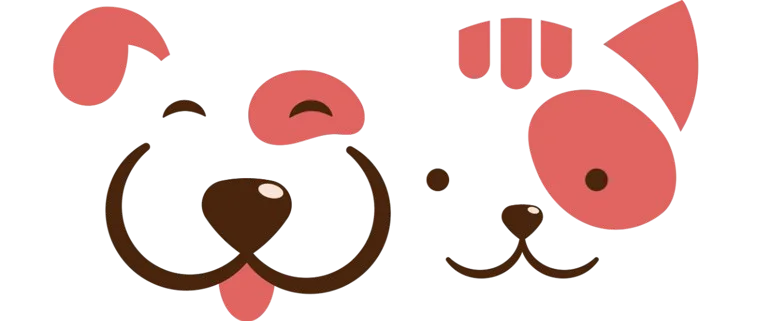
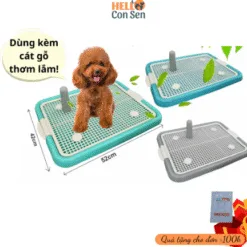 Small dog litter tray with dog litter box pole size 50*36 cm, suitable for dogs under 7kg - Dog and cat accessories
Small dog litter tray with dog litter box pole size 50*36 cm, suitable for dogs under 7kg - Dog and cat accessories 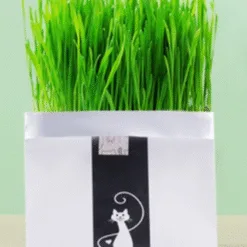 Wheatgrass Cat Grass In Pots
Wheatgrass Cat Grass In Pots 